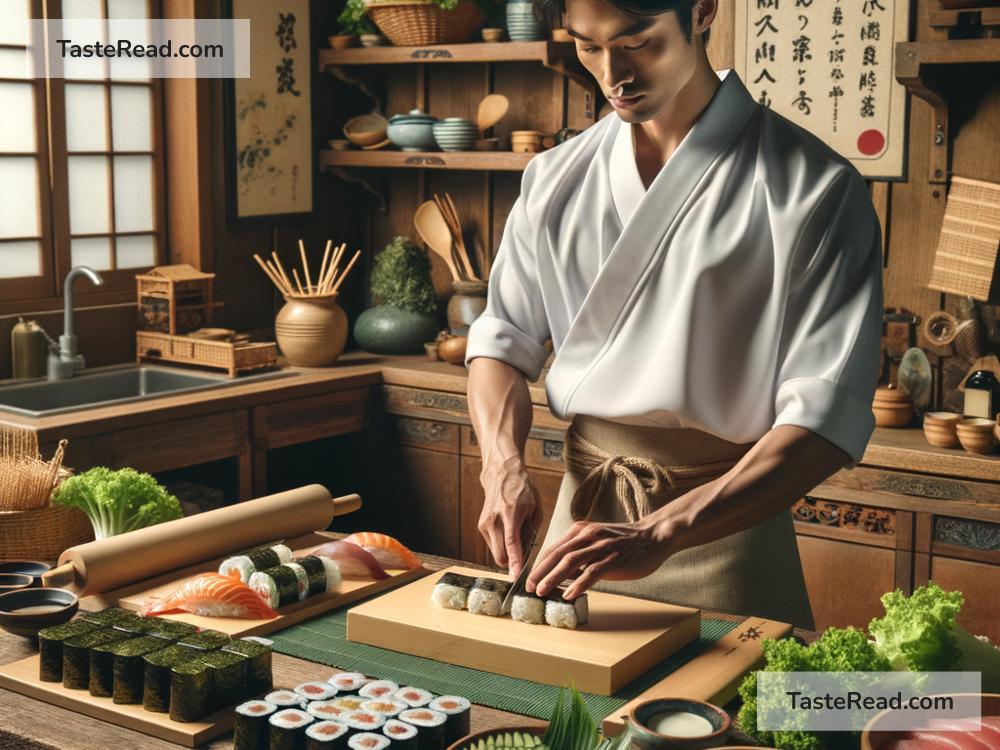The Origins of the Japanese Sushi Roll: A Simple History
Sushi has become one of the most popular foods around the world. Whether you try it at a fancy restaurant or grab a sushi roll at a grocery store, it is known for its fresh flavors and beautiful presentation. But have you ever wondered where sushi rolls come from? To understand the history of this famous dish, we need to explore its roots in Japan and how it grew through time.
What Is Sushi?
Before we get into sushi rolls, let’s talk about sushi itself. Many people think sushi only refers to raw fish, but that’s not true. Sushi is any dish made with vinegared rice, usually paired with fish, seafood, vegetables, or other ingredients. Some types of sushi don’t include raw fish at all. Sushi is loved for its balance of flavors, textures, and its artistic way of being served.
The sushi roll—or makizushi, as it’s called in Japanese—is just one type of sushi. But to understand where it comes from, we need to first go back to the very beginning of sushi.
The Early Roots of Sushi
Sushi started over 1,000 years ago in Southeast Asia before it came to Japan. In those days, sushi wasn’t the fresh dish we know now; it was actually a way of preserving fish. Fish was salted and placed inside fermented rice to keep it from spoiling. This technique is called narezushi.
When narezushi made its way to Japan, people loved the idea of eating fish with rice, but the long fermentation process was inconvenient. Over time, the Japanese made changes to the recipe. They started eating the fish and rice earlier, before the rice became fully fermented. By the Edo Period (1603–1868), sushi had started to evolve into a faster, fresher dish, and vinegared rice became more common. This was the beginning of what would later become modern sushi.
The Birth of Makizushi (Sushi Rolls)
Many of the early types of sushi were eaten as simple bites. For example, nigiri sushi, which is just a small ball of rice topped with fish, became very popular in the 19th century. But sushi rolls came a bit later.
Makizushi, or rolled sushi, is made by wrapping rice and ingredients in a sheet of nori (seaweed) and rolling it up into a cylinder. Then, it’s sliced into bite-sized pieces for easy eating.
Makizushi became popular because it was easier to transport and eat compared to other types of sushi. In the past, Edo (now Tokyo) was a bustling city, and people often ate on the go. Sushi rolls were perfect because they didn’t require utensils or plates—they were portable and perfect for busy workers.
Traditionally, makizushi comes in different forms. For example:
– Hosomaki: Thin rolls with one main filling, like cucumber or tuna.
– Futomaki: Thick rolls with multiple fillings, often colorful and decorative.
– Temaki: Hand rolls shaped like cones, which are held in the hand instead of sliced into pieces.
These styles allowed people to enjoy sushi in new and creative ways.
Sushi Rolls Go Global
For much of history, sushi was mostly eaten in Japan. However, in the 20th century, sushi started to spread to other parts of the world, thanks to globalization. People outside Japan loved the idea of fresh fish and flavorful ingredients combined with rice.
Here’s where sushi rolls transformed again. When sushi arrived in places like the United States, chefs began adapting it to local tastes. This led to the creation of American-style sushi rolls like the California roll. The California roll includes crab or imitation crab, avocado, and cucumber—ingredients that aren’t traditional in Japanese sushi. Instead of wrapping the roll in nori, many chefs used rice on the outside to look more attractive to Western customers.
In places like Canada, the dynamite roll became popular, featuring cooked shrimp tempura instead of raw fish. Chefs around the world started experimenting with different flavors, fillings, and sauces, which led to sushi rolls that were very different from the original makizushi in Japan.
Modern-Day Sushi Rolls
Today, sushi rolls are loved everywhere. While traditional makizushi is still eaten and respected in Japan, people love the variety of flavors found in international sushi rolls. Sushi has become a food that brings together both Japanese tradition and global creativity.
In Japan, sushi rolls are still tied to special occasions and customs. For example, ehomaki (a type of thick sushi roll) is popular during a holiday called Setsubun. People eat ehomaki in silence while facing a “lucky direction” for good fortune.
Outside Japan, sushi rolls continue to change and evolve. You can find rolls with spicy sauces, fruits like mango, fried toppings, and even fusion flavors like Korean or Mexican-inspired sushi. Chefs continue to push the boundaries while honoring the original idea of sushi: delicious rice paired with fresh, high-quality ingredients.
Wrapping Up: A Delicious Evolution
The Japanese sushi roll has come a long way from its simple beginnings. From ancient rice and fish preservation techniques to modern sushi rolls filled with avocado and cream cheese, it’s clear that sushi is a food with endless possibilities. Though its core—vinegared rice and fresh ingredients—remains the same, sushi rolls remind us of how food can bring people and cultures together.
So, the next time you enjoy a sushi roll, whether it’s traditional makizushi or a creative fusion roll, consider its journey through centuries of history. It’s not just a meal; it’s a piece of culture that continues to connect the world!


